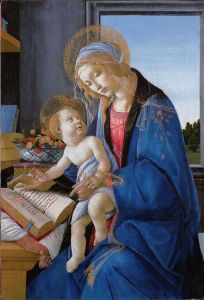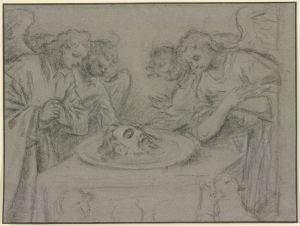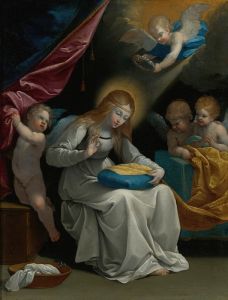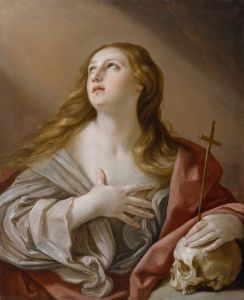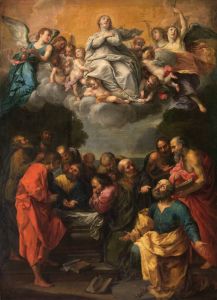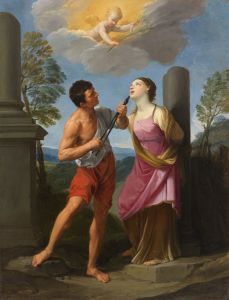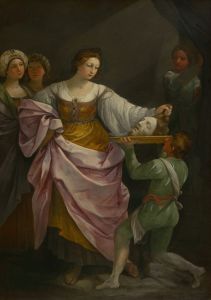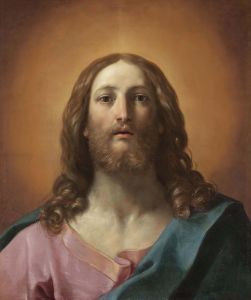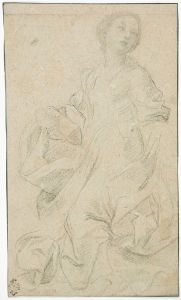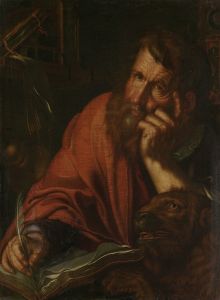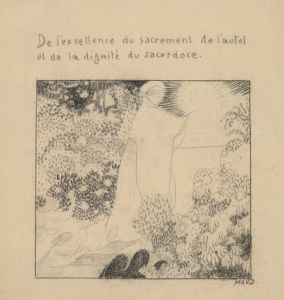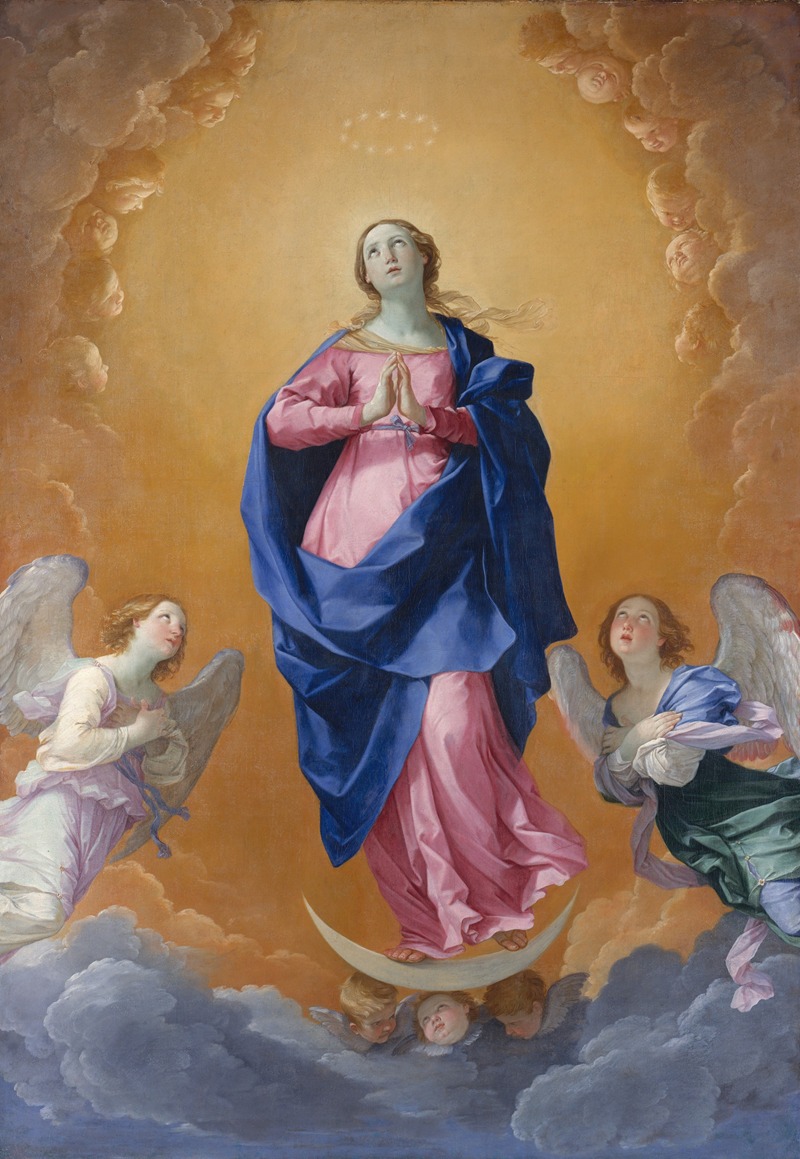
The Immaculate Conception
A hand-painted replica of Guido Reni’s masterpiece The Immaculate Conception, meticulously crafted by professional artists to capture the true essence of the original. Each piece is created with museum-quality canvas and rare mineral pigments, carefully painted by experienced artists with delicate brushstrokes and rich, layered colors to perfectly recreate the texture of the original artwork. Unlike machine-printed reproductions, this hand-painted version brings the painting to life, infused with the artist’s emotions and skill in every stroke. Whether for personal collection or home decoration, it instantly elevates the artistic atmosphere of any space.
Guido Reni's "The Immaculate Conception" is a celebrated painting that exemplifies the Baroque style, which flourished in Europe during the 17th century. Reni, an Italian painter born in Bologna in 1575, is renowned for his graceful and refined compositions, and this work is a testament to his mastery of religious themes and his ability to convey spiritual purity and divine grace.
The painting depicts the Virgin Mary, a central figure in Christian theology, particularly within the context of the Immaculate Conception. This doctrine, which was formally defined by the Catholic Church in 1854, holds that Mary was conceived without original sin. Although Reni's painting predates this formal declaration, the theme was already a popular subject in Catholic art, reflecting the deep veneration of Mary and her unique role in salvation history.
In "The Immaculate Conception," Reni portrays Mary as a serene and ethereal figure, often shown standing on a crescent moon, a symbol associated with her purity and her role as the Queen of Heaven. She is typically clothed in flowing robes of blue and white, colors traditionally linked to her purity and heavenly nature. The composition often includes a backdrop of cherubs or angels, emphasizing her divine connection and the heavenly realm.
Reni's use of light and color in this painting is characteristic of the Baroque style, which is known for its dramatic contrasts and emotional intensity. The soft, glowing light that envelops Mary enhances her otherworldly presence and underscores the spiritual significance of the scene. Reni's delicate brushwork and attention to detail further contribute to the painting's overall sense of harmony and grace.
The influence of Reni's "The Immaculate Conception" extends beyond its immediate religious context. His interpretation of the Virgin Mary has inspired countless artists and has become a reference point for depictions of the Immaculate Conception in Western art. Reni's ability to convey both the humanity and divinity of Mary has cemented his reputation as one of the foremost painters of his time.
Guido Reni's work, including "The Immaculate Conception," is housed in various collections and museums, reflecting his enduring legacy in the art world. His paintings continue to be studied and admired for their technical skill, compositional elegance, and the profound spiritual insight they offer into the subjects they depict.
Overall, "The Immaculate Conception" by Guido Reni remains a significant work within the canon of religious art, embodying the Baroque era's artistic ideals and the deep spiritual devotion of its time. Through this painting, Reni not only captures the theological essence of the Immaculate Conception but also invites viewers to contemplate the divine mysteries and the role of Mary in the Christian faith.






